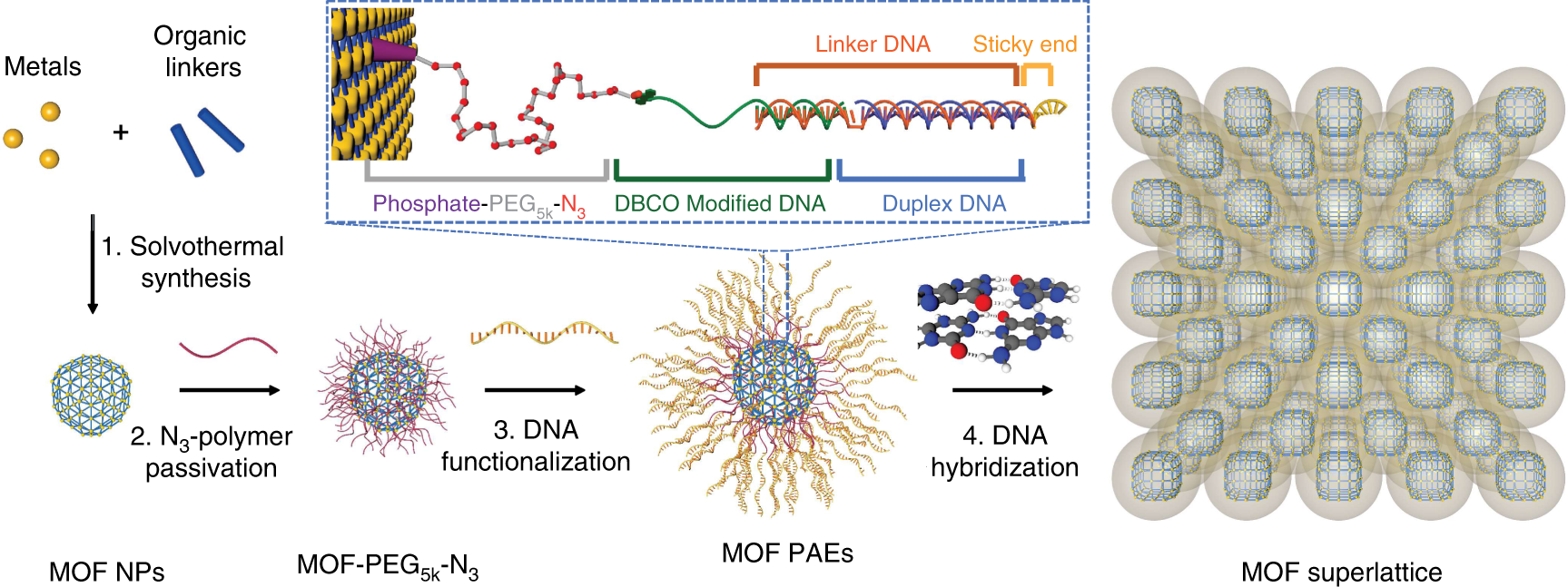Research
Nanoscientists develop new method for engineering colloidal crystals
May 29, 2020

New materials could hold promise for detecting and detoxifying harmful chemicals in the environment, as well as applications in medicine and energy storage
Researchers from the International Institute for Nanotechnology (IIN) at Northwestern University have developed a new method for engineering nanoscopic materials known as colloidal crystals, using building blocks with unique properties that may enable advances in medicine, energy, and the environment.
The research was published May 19 in the journal Nature Communications.
Nanoparticles whose surfaces are coated with nucleic acids can be programmed and assembled into ordered arrays known as colloidal crystals. Some of these crystals have structures that are similar to other solids found in nature, like table salt, but others have structures without a natural equivalent. Colloidal crystals can be engineered for applications in fields like photonics.
Metal-organic frameworks have been used to address problems in gas storage, drug delivery, chemical sensing, and catalysis. These frameworks are composed of organic molecules coordinated to metal ions or clusters in a porous, multidimensional crystalline structure.
Nanoparticle forms of metal-organic frameworks (MOF NPs) have similar potential but offer notable advantages due to their nanoscale size. However, the effectiveness of MOF NPs as building blocks for colloidal crystals has been limited by the non-uniformity of their sizes and their poor stability.
In this study, IIN researchers led by Chad A. Mirkin and Omar K. Farha devised a way to overcome this limitation and improve the uniformity of the MOF NPs. After a centrifuge was used to separate particles with a narrow range of size and density, these MOF NPs were chemically modified with DNA. Then, researchers used the MOF NPs to engineer colloidal crystalline superlattices, either composed entirely of MOF NPs or a combination of MOF NPs and metal nanoparticles.
These new materials show promise not only for detecting the presence of harmful chemicals in certain environments but also for decontaminating them. For example, using MOF NP superlattices as photocatalysts, the researchers were able to transform a simulant of mustard gas into a non-toxic form.
Using this method, 2D arrays and 3D superlattices can be designed and prepared with extraordinary precision, making it possible to develop materials capable of harvesting light for energy storage, sensing molecules, or catalyzing chemical reactions. Their research also shows how the shape of the MOF NP building block influences the resulting structure of the overall lattice.
The paper is titled “Colloidal crystal engineering with metal–organic framework nanoparticles and DNA.”
Mirkin, the corresponding author, is the founder and director of the IIN and the George B. Rathmann Professor of Chemistry in the Weinberg College of Arts and Sciences.
Also affiliated with the IIN are co-authors Shunzhi Wang, Sarah S. Park, Cassandra T. Buru, Haixin Lin, and Farha of the Department of Chemistry at the Weinberg College of Arts & Sciences; and co-authors Peng-Cheng Chen and Eric W. Roth of the McCormick School of Engineering.